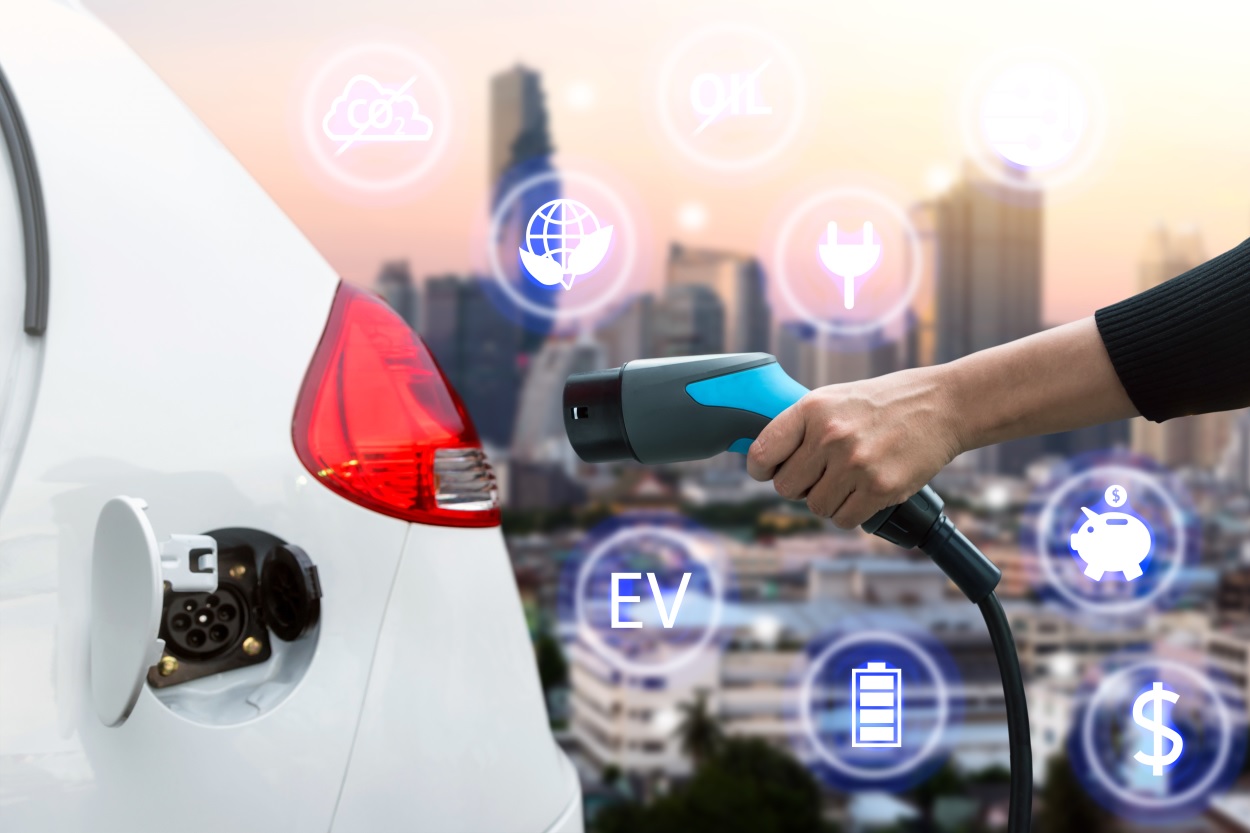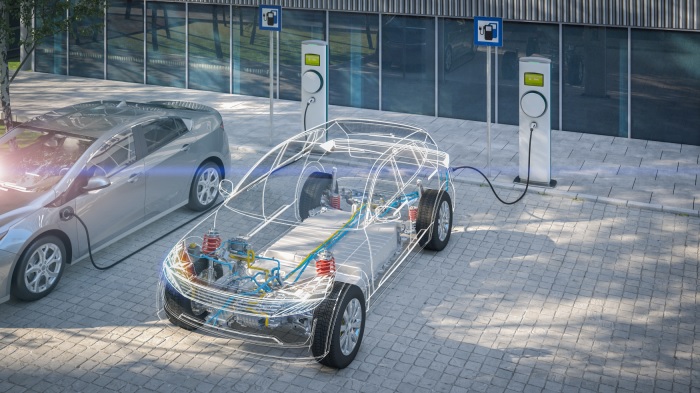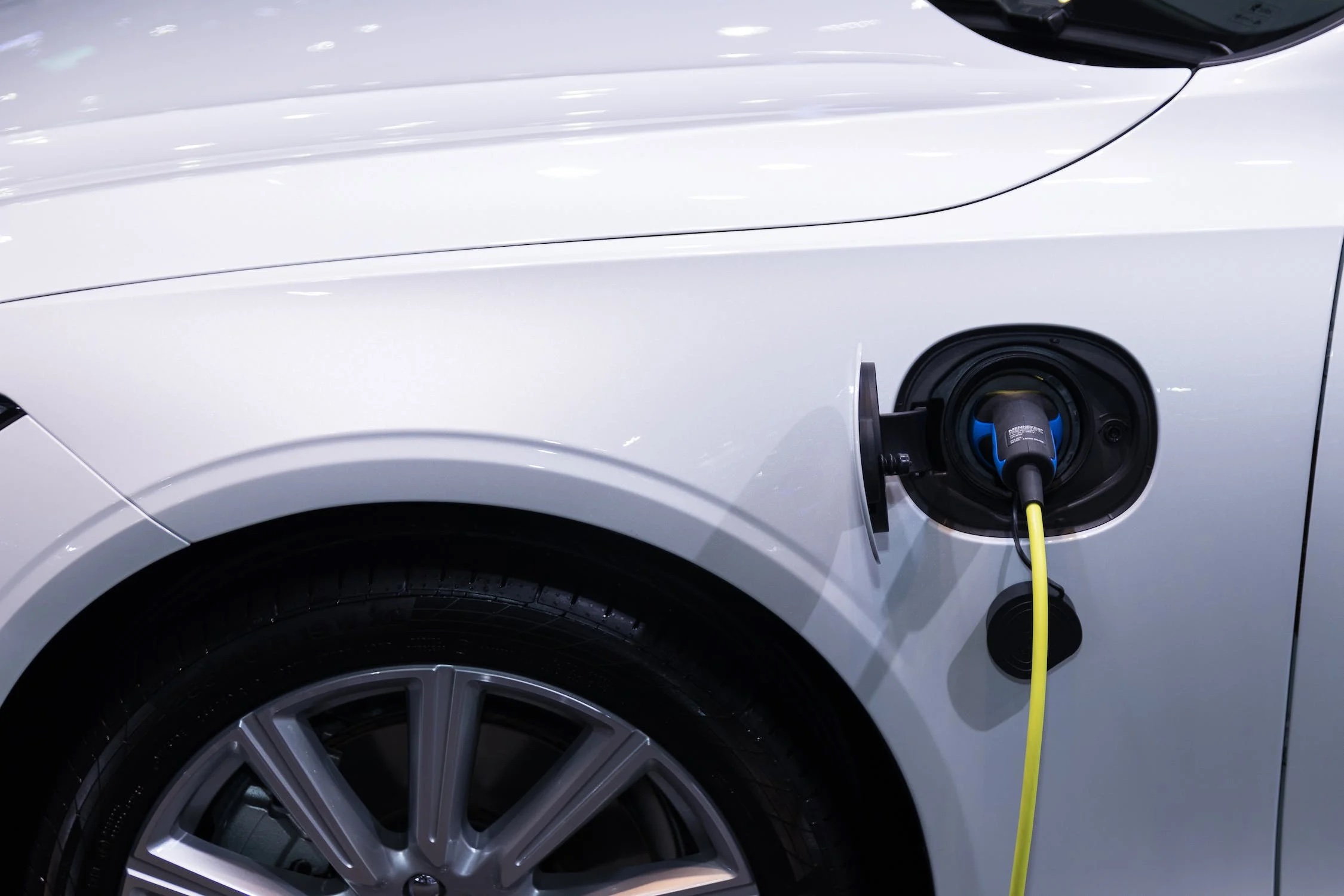The Power of Simulation in E-Mobility for Research and Development

Environmental awareness and sustainability have taken centre stage in today’s global discourse. A significant trend towards electric mobility is rapidly gaining momentum, positioning electric vehicles (EVs) as a promising solution to address climate change, minimise greenhouse gas emissions, and enhance overall energy efficiency. However, the rapid progress in electric mobility necessitates innovative approaches. The pathway to achieving accelerated advancements within a timely framework hinges on robust research and development processes.

According to a recent survey, 75% of respondents expressed their anticipation of owning an electric vehicle during their lifetimes, emphasising the crucial role of environmental considerations in their choices. Regarding travelling, 63% of those surveyed actively think about emissions, and an impressive 60% would even opt for an electric plane, showcasing a growing preference for eco-friendly transport options.
Mobility is a pivotal factor in propelling the global economy and fostering connections for both business and leisure. However, in light of the projected global population surge to 10 billion by 2050, a critical question arises: How can governments, regulators, companies, and individuals effectively navigate the delicate balance between environmental responsibility and the undeniable surge in demand for heightened mobility?
Electric vehicles offer a promising solution to this dilemma, whether on land, water or in the skies. A European report indicates EVs emit up to 30% less greenhouse gas emissions than their gasoline counterparts over the entire vehicle lifecycle. This figure could potentially surge to over 70% by the year 2050.
In the realm of electric mobility, the power of simulation is unrivalled. Simulation technology enables engineers and researchers to model, analyse, and optimise various aspects of electric vehicles, from components to powertrain level, with incredible precision and efficiency. This article will delve into how simulation drives the revolution in E-Mobility R&D, shaping the future of sustainable transportation.
The Evolution of E-Mobility
The journey toward achieving a sustainable future in transportation has been extensive and challenging. Commencing with early experiments involving electric vehicles in the 19th century and transitioning to the widespread embrace of gasoline-powered cars in the 20th century, the automotive industry has witnessed profound changes. Nevertheless, amid the world’s struggle with climate change effects and diminishing fossil fuel resources, electric mobility has emerged as a promising ray of hope.

The rise of modern battery technologies, alongside advancements in power electronics and electric machine design, has paved the way for electric vehicles that can compete with their internal combustion engine counterparts in terms of performance, range, and affordability. Pioneering companies like Tesla have showcased that electric vehicles can be viable but also luxurious and high-performing. This catalysed a surge of innovation and investment within the automotive industry, with nearly every major automaker now either offering electric models or revealing plans to do so.
However, achieving widespread adoption of electric vehicles presents its share of challenges. Researchers and engineers are confronted with an array of intricate issues, encompassing optimising battery performance and longevity, designing efficient powertrains, and addressing safety considerations. This is precisely where simulation technology proves its worth, providing invaluable insights and innovative solutions.
The Role of Simulation in E-Mobility
Simulation in E-Mobility involves leveraging computational models and virtual prototypes to analyse, test, and enhance various aspects of electric vehicles and their components. Its applications are diverse and encompass the following:
- Battery Modeling and Management: Electric vehicle batteries are pivotal components, directly impacting crucial factors like range, charging time, and overall vehicle efficiency. Simulation allows researchers to develop precise models of battery cells and packs, enabling the evaluation of thermal behaviour, prediction of ageing, and optimisation of the battery management system for superior performance and durability.
- Powertrain Optimization: Electric powertrains have complex systems, including electric motors, inverters, and control algorithms. Simulation aids in designing and optimising these components, ensuring efficient power delivery, minimal energy losses, and compliance with safety standards.
- Aerodynamics and Vehicle Design: Aerodynamics are crucial in electric vehicle efficiency. Through simulation, engineers can analyse airflow around the vehicle, optimise vehicle shape, and reduce drag, thus improving energy consumption and range.
- Charging Infrastructure: The development of fast and efficient charging infrastructure is vital for the widespread adoption of electric vehicles. Simulation assists in designing charging stations, predicting charging times, and optimising grid integration.
- Safety and Crash Testing: Ensuring the safety of electric vehicles is paramount. Simulation enables virtual crash testing, allowing engineers to assess vehicle crashworthiness and make design improvements without physical prototypes.
- Environmental Impact Analysis: Electric vehicles are often touted as more environmentally friendly than gasoline-powered ones. Simulation helps quantify the environmental impact by assessing emissions, energy consumption, and lifecycle analysis.
Major hurdles in the E-Mobility sector
Safety and cost pose significant challenges for the EV market, impacting electric vehicles and energy storage solutions. As EV manufacturers strive to expedite development and market entry, the issue of fire risk has become a prominent concern. Recently, numerous reported fire incidents have been reported globally, leading to fatalities, serious injuries, and extensive vehicle recalls. Additionally, ensuring optimal EV performance necessitates constant monitoring and precise control of battery cell temperatures, staying within defined temperature thresholds.

Additionally, an electric vehicle’s battery pack and BMS account for about 40%-50% of EV cost. Though the average cost of electric vehicle batteries has been steadily decreasing through 2021, an average cost of $100 per kWh for lithium-ion battery packs is usually the cost-competitive price point for most electric vehicles. Currently, it stands slightly above $150 per kWh.
Delivering safer, high-performing, cost-effective electric vehicles to consumers is a top priority in India and globally. In the EV industry, being at an early stage, the cumulative industry experience to deal with the complex system of electro-chemical-thermal and software is still evolving. OEMs will need to bring vehicles to market early and maintain safety and cost to stay relevant in the ongoing phase of disruption.
Advantages of Simulation Engineering
Simulation technology has been at the forefront of empowering engineers and researchers in electric mobility that offers solutions covering all-electric vehicle development aspects.
- Battery Simulation: Simulation helps in modelling the electrochemical behaviour of batteries, allowing researchers to simulate battery performance under various conditions. This includes thermal management, state-of-charge estimation, and ageing predictions. These tools enable the development of safer and longer-lasting battery packs.
- Power Electronics and Motor Design: Facilitate the design and optimisation of electric motors and power electronics. Engineers can analyse electromagnetic performance, thermal behaviour, and power losses to create efficient and reliable powertrains.
- Aerodynamics and Vehicle Design: Computational fluid dynamics (CFD) tool assists in optimising vehicle aerodynamics, reducing drag, and enhancing overall vehicle efficiency. This leads to increased range and energy savings.
- Charging Infrastructure: These simulation capabilities extend to the design and analysis of charging infrastructure. This includes modelling charging station layouts, predicting power demand, and assessing grid compatibility.
- Safety and Crash Testing: This simulation feature allows virtual crash testing and structural analysis. This reduces the need for physical prototypes and accelerates the development of safe electric vehicles.
- Environmental Impact Assessment: A tool that enable engineers to perform comprehensive environmental impact assessments, helping automakers quantify the sustainability benefits of their electric vehicles.
How Simulation can Impact the World
To illustrate the power of simulation in E-Mobility R&D, let’s explore a few areas where simulation solutions have made a significant impact.
- Battery Optimization for Extended Range
One of the primary concerns for electric vehicle manufacturers is achieving longer driving ranges. A battery simulation tool enables leading automaker to optimise its battery pack design. By modelling the thermal behaviour and ageing effects of different battery configurations, engineers could extend the vehicle’s range by 15%, all without physically altering the battery pack. This enhances the vehicle’s appeal and contribute to reduced emissions by encouraging longer electric-only driving.
- Electric Motor Efficiency Enhancement
Efficiency is a critical factor in electric vehicle design. The electromagnetic simulation tools allows major electric vehicle manufacturer to optimise the design of its electric motor. By fine-tuning the motor’s electromagnetic characteristics, engineers achieve a 10% increase in overall motor efficiency. This efficiency gain translates directly into extended range and improved energy utilisation, contributing to the vehicle’s market competitiveness and environmental benefits.
- Fast-Charging Infrastructure Development
The growth of electric vehicle adoption depends on fast and convenient charging infrastructure availability. Simulation capabilities aid in the development of a nationwide fast-charging network. By modelling various charging station configurations, engineers could optimise the placement of stations for maximum coverage and efficiency. This can accelerate the deployment of charging infrastructure and reduce the environmental impact by minimising unnecessary infrastructure construction.
Challenges and Future Directions
While simulation has revolutionised E-Mobility R&D, challenges remain. The complexity of electric vehicle systems continues to grow, necessitating even more advanced simulation tools and high-performance computing resources. Moreover, integrating electric vehicles into smart grids and developing vehicle-to-grid (V2G) technologies present new simulation challenges.
To overcome these challenges, engineers are continually innovating and pushing the boundaries of innovation. Today, artificial intelligence and machine learning investments enhance simulation capabilities, enabling engineers to explore design options and optimise systems more efficiently and rapidly. Furthermore, the development of digital twins, the virtual replicas of physical vehicles, promises to taper the gap between simulation and real-world testing by offering heightened accuracy and reliability.
Conclusion
Simulation has emerged as an indispensable tool in the research and development of electric mobility. In the quest for sustainable transportation solutions, the power of simulation provided by industry leaders like Ansys cannot be overstated. It enables engineers and researchers to innovate, optimise, and validate electric vehicle technologies with unprecedented precision and efficiency.
As electric mobility progresses, simulation is set to be a linchpin in sculpting the trajectory of transportation’s future. Whether extending driving ranges, refining charging infrastructure or advancing safety measures, simulation is the propelling force for the electric vehicle revolution. With the continual evolution of simulation technology, we can anticipate a future with even more sustainable, efficient, and eco-friendly electric vehicles. In its dedication, Ansys continues to spearhead engineering simulation, empowering engineers and researchers to forge a greener and more sustainable world through their work in E-Mobility R&D.
Author: Rafiq Somani, Area Vice President, India and South Asia Pacific at ANSYS Inc.



